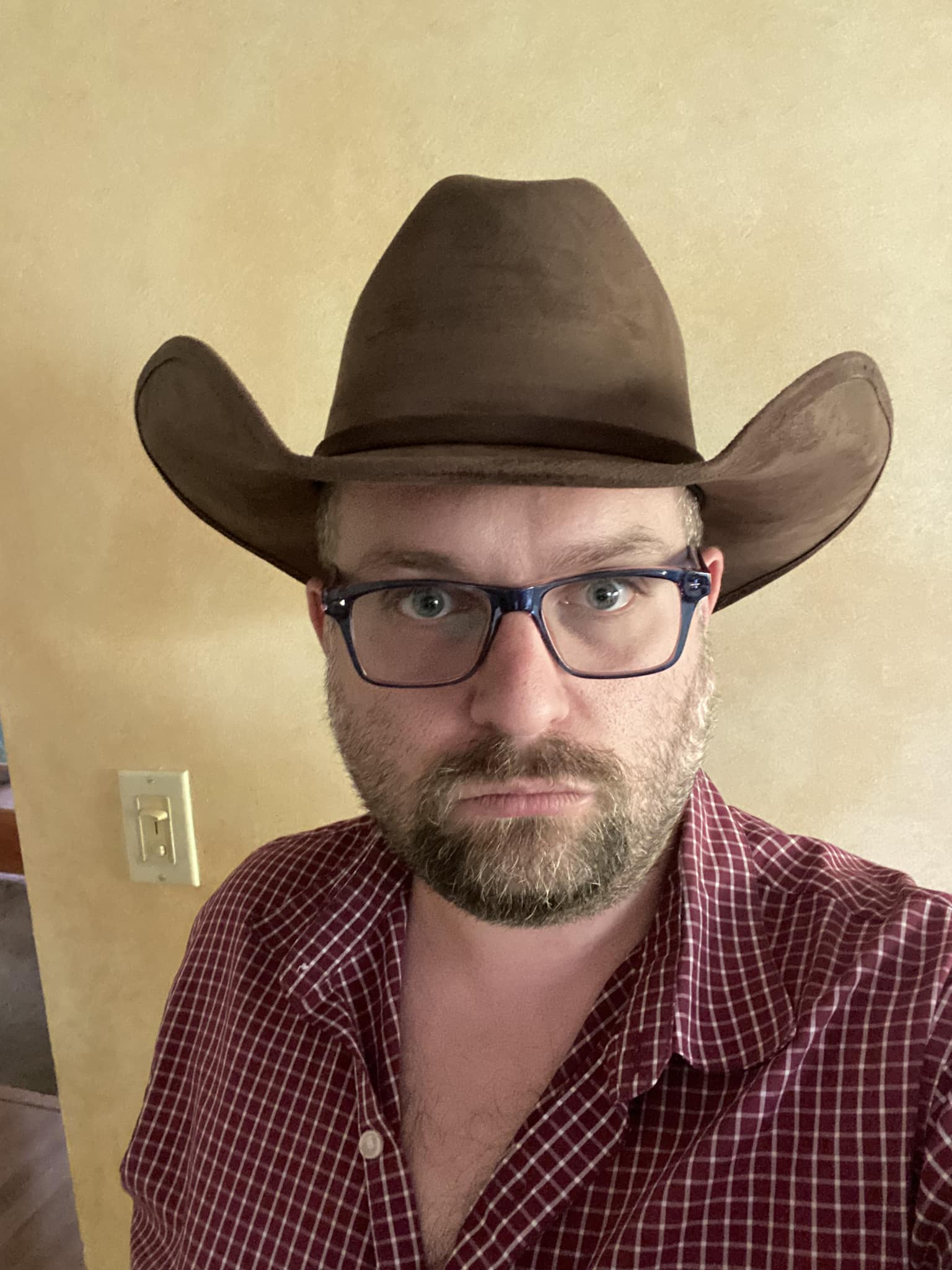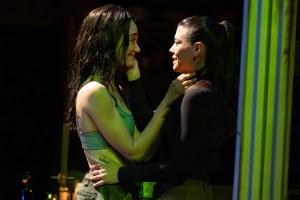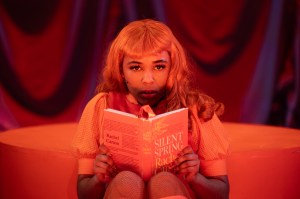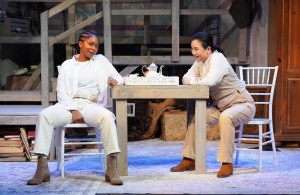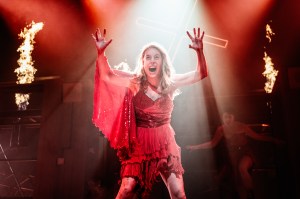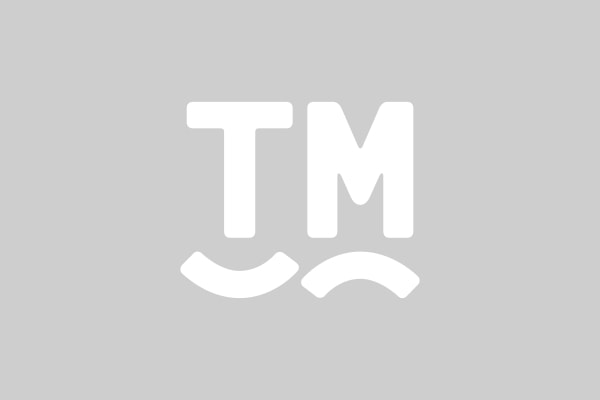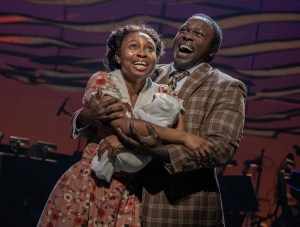Interview: Warren Carlyle Discusses His “Machiavellian” Directing Choices in Harmony on Broadway
Carlyle stages and choreographs the new Barry Manilow-Bruce Sussman musical at the Barrymore Theatre.
Barry Manilow and Bruce Sussman’s musical Harmony has had a wild ride of a journey to Broadway, one that began 30 years ago and endured all sorts of bumps along the way. It wasn’t until they hooked up with director/choreographer Warren Carlyle that they managed to get it past the finish line, and Carlyle, who first met the writers decades ago as a chorus boy in their musical Copacabana, proved to be the ideal collaborator. In Carlyle’s haunting staging at the Barrymore Theatre, the set (by Beowulf Boritt) is a giant mirrored box in all black, aiming to reflect the audience’s culpability in this story of a mostly Jewish singing group whose careers and worldwide successes were virtually erased by Hitler.
It’s a tough subject, and one that has only gotten tougher in recent months. And that’s why Carlyle feels such a responsibility to the material, the Jewish community, and the Comedian Harmonists, whose stories are brought back to life eight times a week.
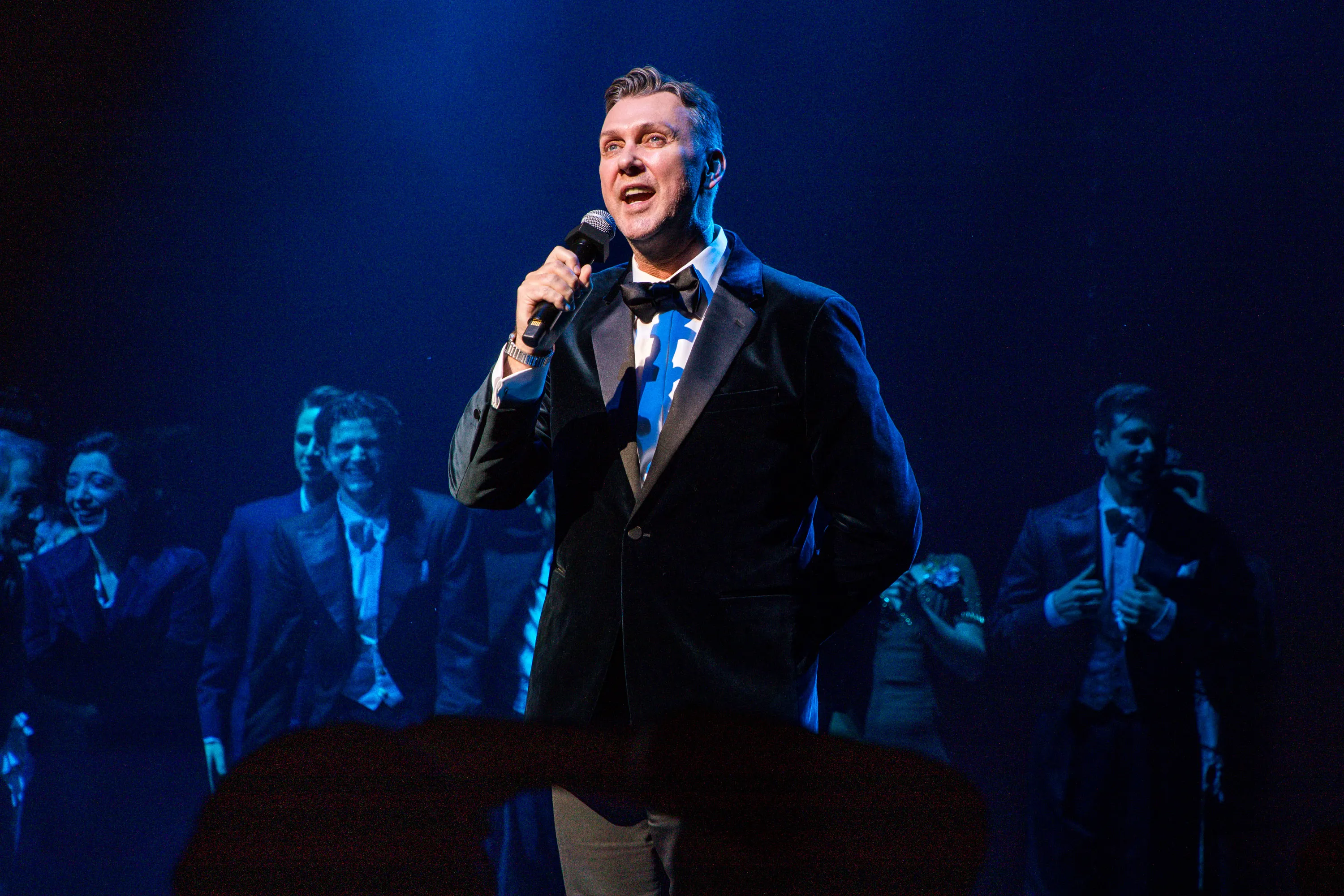
(© Tricia Baron)
This conversation has been condensed and edited for clarity.
Seeing Harmony made me want to look everything up about the real story behind the six guys, and I’m upset that the one version of the original documentary that I found on YouTube is in German, which I don’t speak. But it’s such a fascinating story.
It’s really interesting, right? I was captured by the true story element. These are real flesh and blood guys who existed. I felt a strange pull toward telling the story and getting it right, or at least making it as real as I could. I’m so glad you were interested in them. It’s such a curious piece, right? And we struggle now with, will it reach a wider audience? I don’t know. I am not Jewish, but I find it wildly compelling.
I was going to say, I’m sure the resonance down at the Museum of Jewish Heritage was astounding on a spiritual level when you all did the show almost two years ago. Was there a visible shift in reaction when you began previews on Broadway, in light of all that’s going on in the Middle East now?
It’s interesting. We don’t have many devoutly Jewish members of the cast, but we have a couple, and they certainly were affected by it. There’s a line by Einstein that gets a gasp from the audience now, and there’s also a beautiful line at the beginning of the wedding scene. Chip stands center stage and says “As you enter the house of Israel, may you find happiness and peace.” I was always just like “Oh, it’s a wedding.” You do the circling, the ring goes on that finger, you step on the glass, I did all my homework to make it a very traditional Jewish wedding. But the words struck me differently. And there’s a scene with the Standartenführer, when he gets on stage and the three Jewish characters are huddled together, Danny Kornfeld, Zal Owen, and Julie Benko. They realize that they can’t fight it, that there’s no way for them to win. Moments like that have struck me personally, and audiences seem to be hit in the same way.
I was impressed by the accuracy of the wedding scene in particular, in terms of the traditional aspects.
I really care about it. I just wanted to get it right. I’m very respectful and I feel a duty to getting this story right, to represent the Jewish faith. It’s really tricky. There’s a responsibility that comes with it that’s different than tap dancing and throwing books. It struck me in a more adult way.
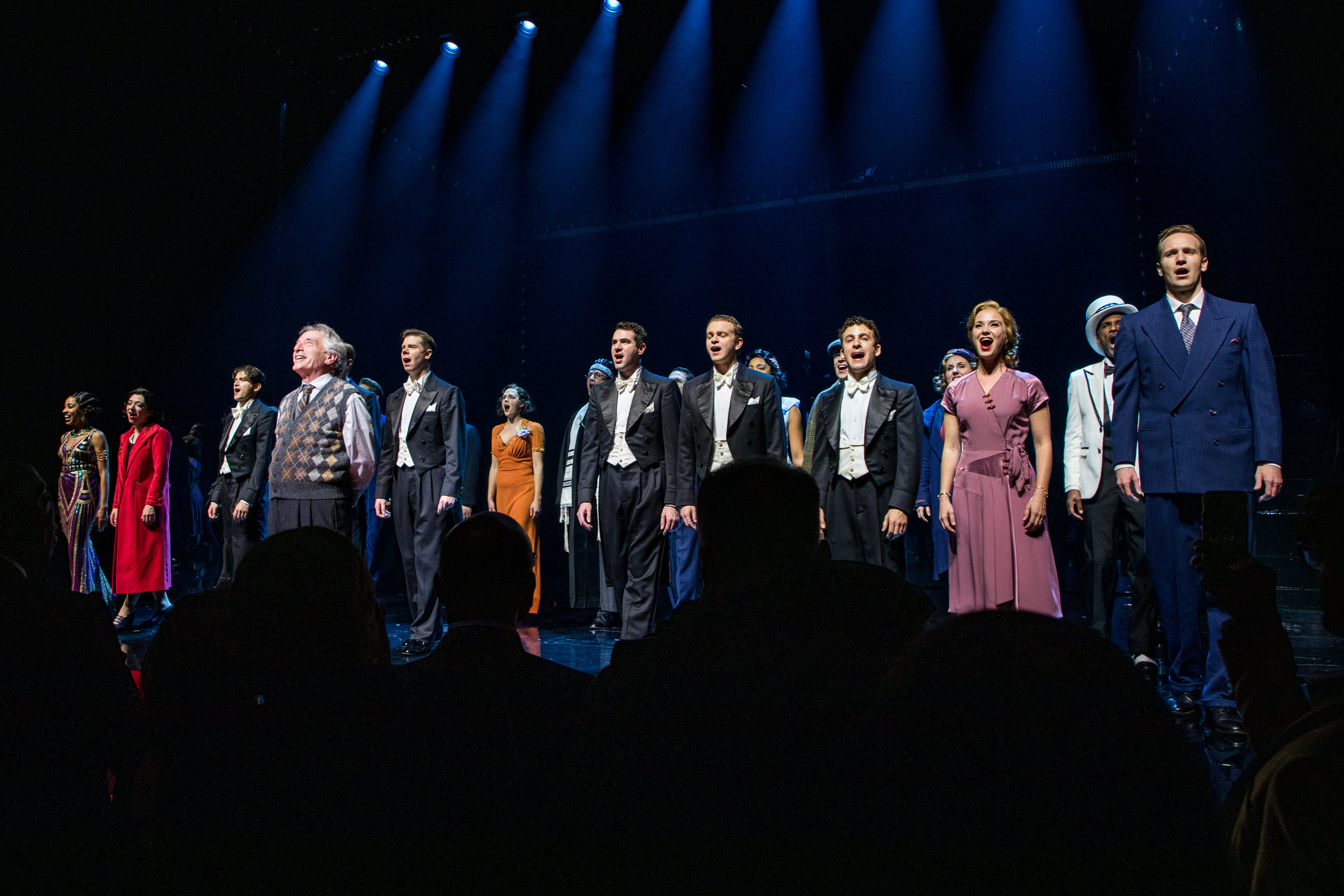
(© Tricia Baron)
There are so many elements in your production that strike me as having been directly influenced by Hal Prince’s Cabaret, and Bob Fosse’s version of Cabaret, and certainly Brecht. Can you talk about that?
That’s actually a good question. It’s kind of astute. I was hoping no one noticed! [Laughs] The parallels are interesting and were there in my mind. Between the downtown run and Broadway, I went back and watched Bob Fosse’s movie of Cabaret because I was looking for a prototype that entertained and then terrified. A lot of my thoughts were based on that movie. What I loved about it was, it layered things. Our rally scene: Downtown, I did one thing at a time. Uptown, I had more crossovers. I had different flags. I had different video content. Fosse does that brilliant thing where they’re walking down the street and you see a incidentally see a Swastika. He was always layering. A message was always buried somewhere. I’m embarrassed that I wasn’t sophisticated enough to layer it like that downtown. Uptown, I think we all just knew it better and were more on top of the material.
The shiny black box of a set was always there. It has to do two things: it does have to entertain you, and like a fun house, it also has to terrify you and be this inky black world where people can just walk in and out of it. And because it’s a memory play, and Chip’s character doesn’t want to remember the whole thing, I wanted fractured images. I’m also holding the giant mirror up to the audience. The Machiavellian part of the direction is making everyone look in the mirror to say that they’re letting it happen. This is about bearing witness and holding the audience accountable.
I find it very moving. On opening night, I had to give a speech so I was digging my nails into my hands. Having to give a speech is a nightmare, but I had to say thank you to those fellas. They really deserved it. They never gave up after 30 years of disappointments and speed bumps, so to be able to deliver the gift of this show for them at this particular time, I just love it. And having been a chorus boy in Copacabana, I never could have seen this coming. I never could have predicted in my wildest dreams that I would find myself directing their Broadway show 30 years later. It’s a highly emotional endeavor.
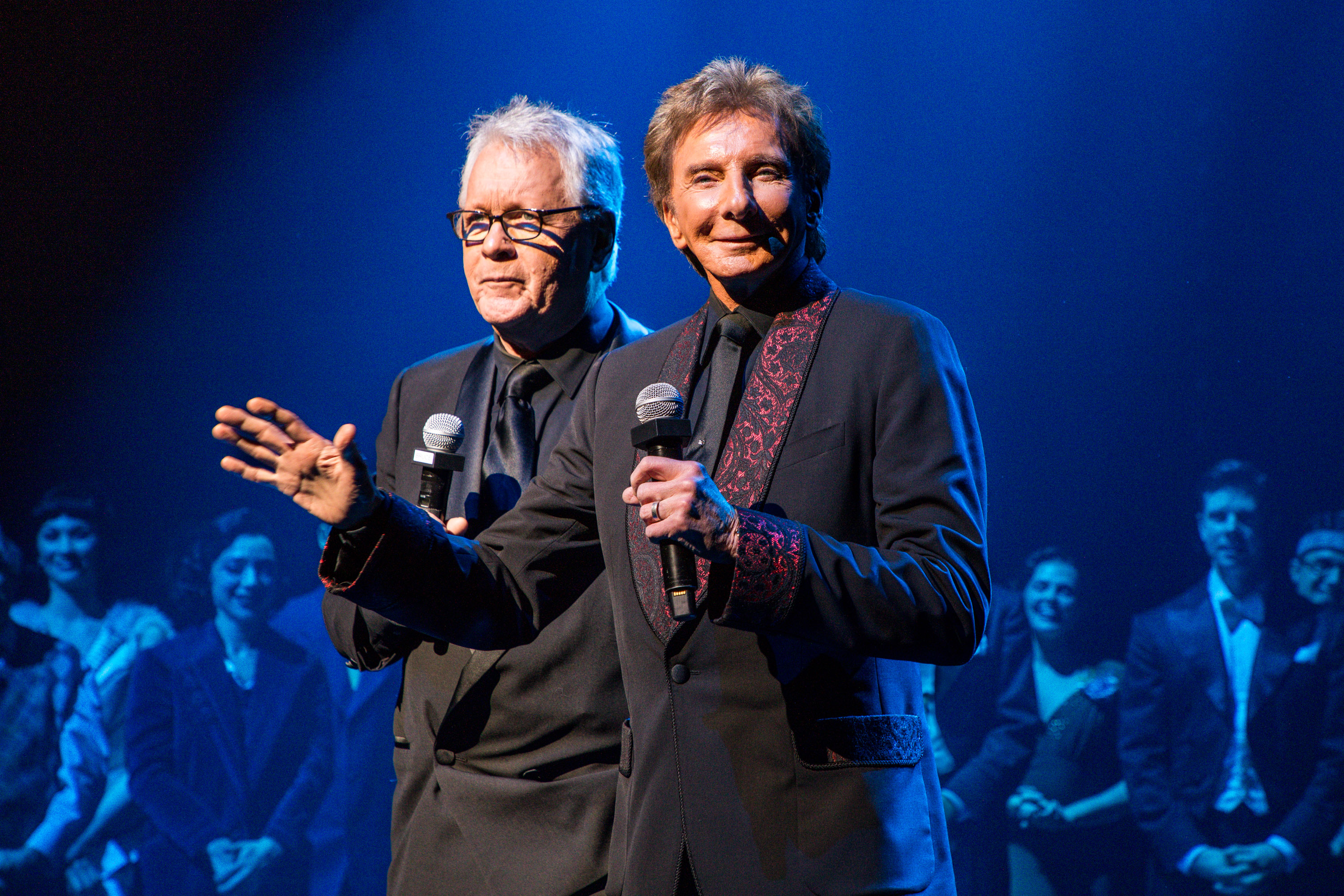
(© Tricia Baron)



